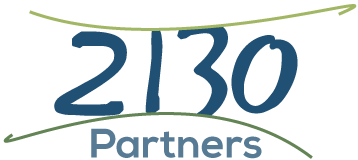 “Do or don’t do, there is no trying” — Yoda
We had a great discussion in one of our mastermind groups about “trying” – the hopelessness of it, the fear of failure in it, and the access it provides to dealing with “real issues” and producing real increases in effectiveness.
“Do or don’t do, there is no trying” — Yoda
We had a great discussion in one of our mastermind groups about “trying” – the hopelessness of it, the fear of failure in it, and the access it provides to dealing with “real issues” and producing real increases in effectiveness.
There have been a number of people who have examined the notion of “try or trying” and confronted the hopelessness in it. Saying “I’ll try” seems to be a socially acceptable statement that allows both parties in an accountability conversation to drift off into the delusion that something is going to happen.
The biggest issue with these types of “try” statements is that you are almost guaranteed to get away with it, others will buy it, and there will seldom be any of the promised results. To some degree, there’s an element of “I won’t call you on yours if you don’t call me on mine…”
The second big loss is that when you get away with deluding others and yourself, you never really look “under the hood” to see what the unsaid block is to actually accomplishing what you were “trying” to do. What stops you, probably over and over, robbing you of both results and satisfaction?
In our work, we talk about any statement with “try” in it as an “impotent conversation” that embodies a “said” and an “unsaid” portion. The “said” portion will always be something like “I’m going to try to be more consistent in my performance in that area.” The unsaid portion is “…but I can’t…or he won’t let me…or we don’t have any budget for it or I don’t know how…or…” Fill in your own version by catching yourself in the act of using “try.”
The next time you hear yourself say “I’ll try…” stop and ask yourself what limiting belief is hidden in the unsaid part of the statement? Generally it is an old story about yourself, others or your circumstances. It is facilitated by some fear or concern and is one of your excuses to get off the hook in some way.
Examining that belief newly, you may discover that it is no longer true, if it ever was. Unexamined, it keeps you from experiencing your own power, discovering the resources you will need, or garnering the support from people you may have believed wouldn’t support you.
After some practice at catching yourself and documenting your “unsaids,” you may find a whole new level of energy, enthusiasm, and performance. You may identify the conversational patterns or relationships where you will say “no” instead of the usual “I’ll try.” You may learn to hear requests more clearly and accurately and to make counter offers when you really can’t meet the request. You will be much more effective and reliable when you do say “yes” and others will see your productivity as having taken a dramatic jump.














 As we discuss comfort zones, set points, etc. we want to be clear that this is not a piece about people who plod along and move slowly or people who seem risk averse. If you are a fast-paced, “go go go” type of person that is your comfort zone. What if you had to slow down, be more reflective, bring your energy “down and in” instead of being an “up and out” kind of person? What if you had to take on a meditation practice? Would you still be in your comfort zone? What if you are a thrill seeker and look for ways to “push the envelope” all the time? What would happen if you lived a more mundane existence and had to experience the ordinary? Would you still be in your comfort zone?
As we discuss comfort zones, set points, etc. we want to be clear that this is not a piece about people who plod along and move slowly or people who seem risk averse. If you are a fast-paced, “go go go” type of person that is your comfort zone. What if you had to slow down, be more reflective, bring your energy “down and in” instead of being an “up and out” kind of person? What if you had to take on a meditation practice? Would you still be in your comfort zone? What if you are a thrill seeker and look for ways to “push the envelope” all the time? What would happen if you lived a more mundane existence and had to experience the ordinary? Would you still be in your comfort zone?
 How bold are you willing to be setting your goals? If you are completely certain you can make the goals are you stretching yourself enough? Focus on designing the most catalytic, highly leveraged action steps you can. By “catalytic” we mean that your actions produce the intended results without your being used up in the process. By “highly leveraged,” we mean you produce very big results with minimal resources.
How bold are you willing to be setting your goals? If you are completely certain you can make the goals are you stretching yourself enough? Focus on designing the most catalytic, highly leveraged action steps you can. By “catalytic” we mean that your actions produce the intended results without your being used up in the process. By “highly leveraged,” we mean you produce very big results with minimal resources.



